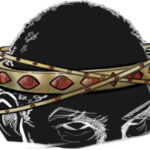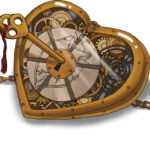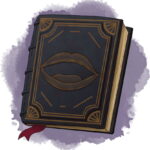Wondrous Item, common
Medicinal Herbal Treatments
While most fantasy settings use herbal medicine implicitly, it has more of a stigma in much of the real world, especially cannabis. We chose to include the suggested magic hookah as an opportunity to address the stigma associated with the medicinal use of cannabis.
Often more commonly known as medical marijuana, when used responsibly, it can often help relieve chronic pain, insomnia, depression, anxiety, PTSD, multiple sclerosis, and other conditions more effectively and with less side effects and addictive potential than prescription opioids and other modern pharmaceuticals. But like modern pharmaceuticals, it has side effects which users need to consider before driving or performing other activities requiring concentration, just as a PC needs to plan accordingly, and an unexpected need for mental clarity may be problematic in both real and fantasy worlds.
The stigma prevents many people from benefiting from cannabis’s medicinal effects, so we encourage those with concerns to research the topic and communicate with their health care providers. Note also that this stigma can lead to people not being able to access medical marijuana whether it be lack of funds to pay or providers who don’t believe in its use.
We recognize that some wish to use this book in educational settings with specific policies regarding depictions of drug use, so we emphasize responsible lawful use of all substances, and where policies or discretion requires omission of certain sections of this book, we trust those responsible to manage this content in your setting. We also provide a Players Edition that does not include the magic item lists, which alleviates this tension in those settings and makes the purchase of multiple copies for students or clients more affordable.
This item includes a hookah, a serving tray, and the hookah’s associated accessories, such as coals, tongs, and hoses. The tray, magically bonded to the hookah, will follow its owner, floating alongside, behind, or ahead, as ordered. The hookah is always clean, full of cold water, and ready for use. A new coal can be ignited with a command word, and if missing, another coal and tongs will appear with a command word. If the coal is removed, it instantly cools. Once you use the hookah, it will magically clean itself and prepare for another use. When you smoke the appropriate herb, oil, or incense through the hookah, it gives +2 to all saving throws against the target mental trait or pain you experience for 1d6 hours. The correct substance(s), always nonmagical, may be determined by succeeding on a DC 10 Intelligence (Arcana) check followed by succeeding on a DC 15 Wisdom (Survival) check for every hour spent searching in an appropriate location for the needed materials. Smoking through the hookah takes 10 minutes. The hookah can only be used once every 12 hours. While affected by the hookah, you also experience 1d6 of the following: Heightened Emotions, Baseless Emotions, Hallucinations, Delusions, Eating Disruption (Binge Eating), Personality Difference. (Roll on the Impact Extent table for each.)



